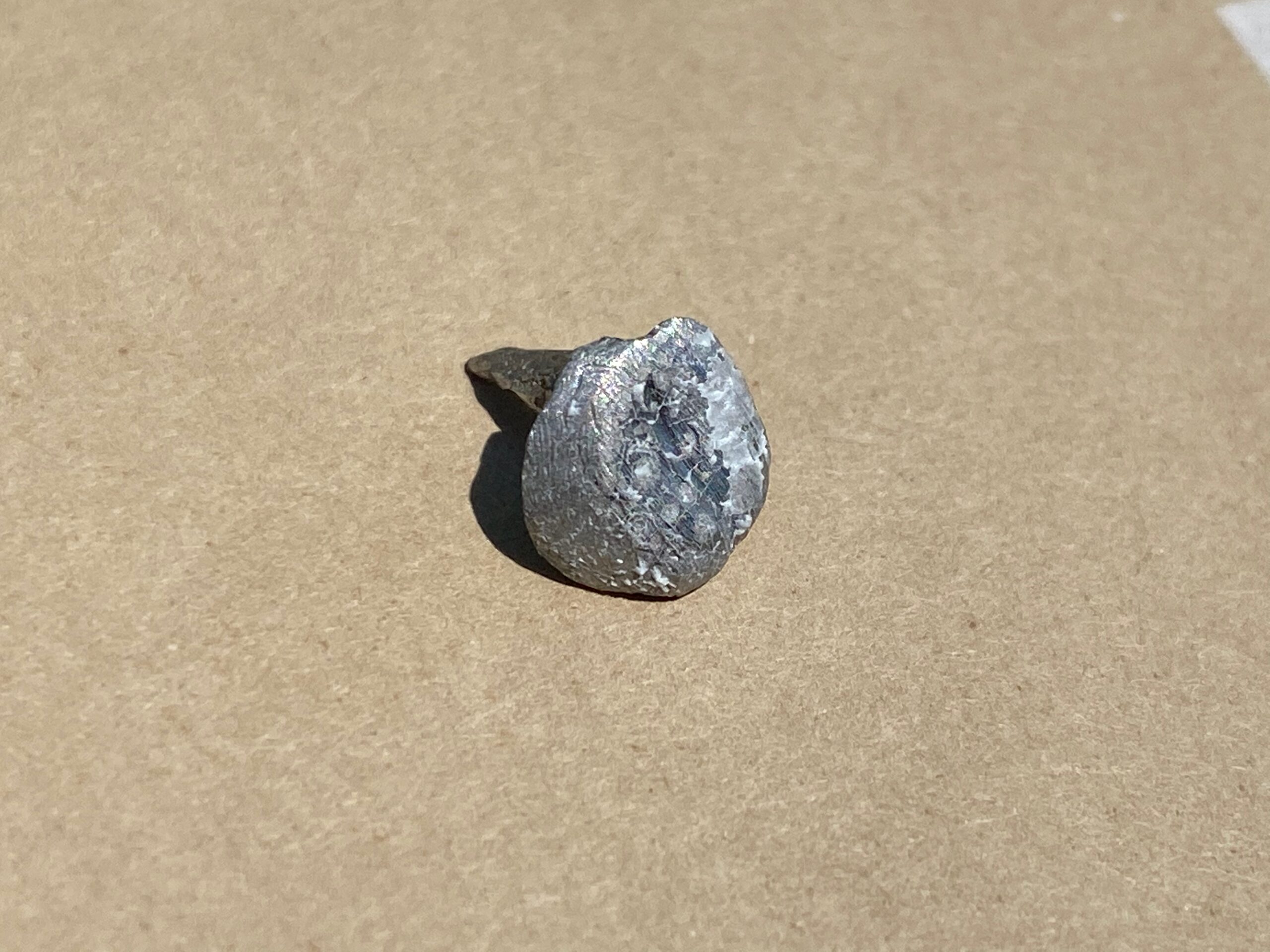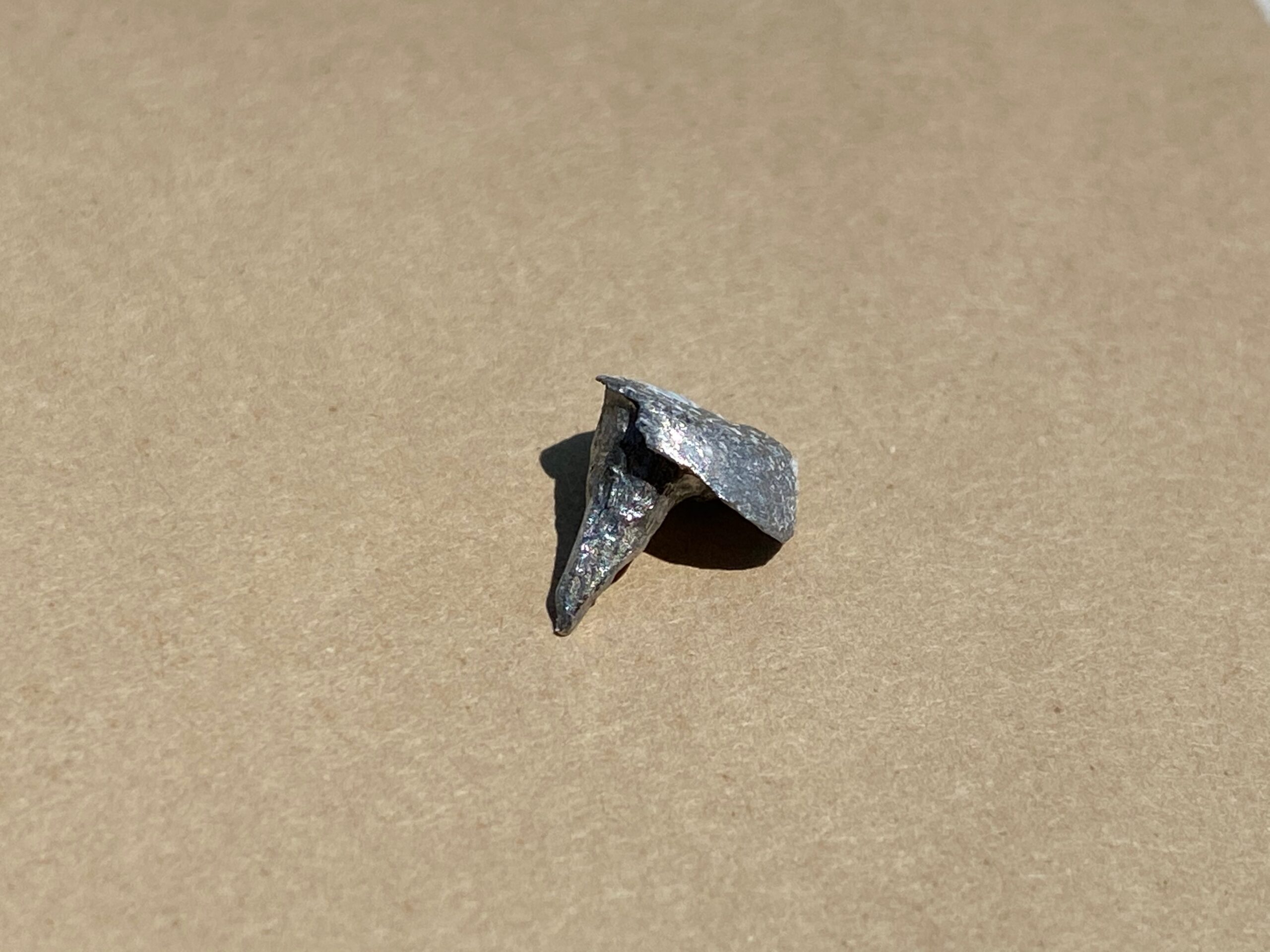XRF test results for “sketchy” dental implant: Cobalt, Chromium, Nickel, Molybdenum, Titanium, Vanadium.
 Dental Implant
Dental Implant
My readers have sent me in some interesting things for testing (for a variety of reasons!) including this “dental implant” (as described by the reader). The reader sent this item to me because he was concerned about the possible presence – and impact – of toxic heavy metals in his implant [which he said was done by a dentist that may not have been using reputable techniques and materials].
While high-precision XRF testing is science-based, accurate and the results are completely replicable, despite the fact that the heavy metals I normally look for (Pb, As, Sb, Hg & Cd) were not found, I want to be clear that it is still possible that very low trace levels of these metals may be in the implant (possibly at 1 ppm or below, below the limit of detection of XRF instrumentation.)
Unfortunately (only “unfortunate” in this case because this item is not a normal “consumer good” but an item that is intended to be in the mouth for many years) the XRF only tests down to single digit parts per million (ppm), not parts per billion (ppb). With something that is meant to be an implant that is in the body permanently (or at least for many years) I would be curious to know the ppb readings on any trace metals to ensure safety long-term. For those new to the science here, there are 1000 ppb in 1 ppm.
While testing with a high-precision XRF Instrument is a good “pre-screening tool” prior to even more sensitive lab testing – if you need something tested because a medical lawsuit might be in the works, I would definitely also recommend following up such testing with a lab (if at all possible) to find out what the levels were – down to single digit ppb accuracy. Labs will also give you a formal report with the test results (something I do not provide with the testing I do and report here on my blog). It is my understanding that the reader who sent this in to me tried to get testing done in a lab but could not find a lab willing to do testing of consumer goods for an individual (vs. testing done for a manufacturer) – which is how his online search led him to me.
Separately – not being a doctor or toxicologist – I do not know what health impacts there might be (if any) from the metals that were detected by the XRF testing reported here. For example, I understand Cobalt is considered toxic in some applications and Nickel and Chromium can also be toxic, depending on the application and environment (and interaction with other metals in the sample) but again, I cannot even begin to speculate if these metals should be considered toxic in this formulation as a dental implant.
One final consideration is that the small size of the implant means it does not fill up the full scope (reading window) of the XRF Instrument — so the total ppm of all metals added together may not make up 1,000,000 (the total “parts” in “parts per million”) – leaving room as, the repetitive readings show, for some lack of specificity in actual metals makeup (even though the comparative percentages of how much of each metal there is in the sample should be approximately the same as detected in any single reading).
The dental implant pictured here had the following test results:
60 – second test #1
- Chromium (Cr): 114,200 +/- 1,400 ppm
- Molybdenum (Mo): 97,800 +/- 900 ppm
- Nickel (Ni): 769,500 +/- 1,900 ppm
- Cobalt (Co): 2,759 +/- 465 ppm
- Vanadium (V): 4,217 +/- 474 ppm
- Titanium (Ti): 9,439 +/- 716 ppm
60 – second test #2
- Chromium (Cr): 125,500 +/- 1,700 ppm
- Molybdenum (Mo): 94,200 +/- 1,000 ppm
- Nickel (Ni): 754,300 +/- 2,300 ppm
- Cobalt (Co): 3,008 +/- 563 ppm
- Vanadium (V): 5,915 +/- 625 ppm
- Titanium (Ti): 12,400 +/- 900 ppm
180 – second test
When testing items having metal substrates, longer tests with an XRF Instrument (e.g. 180 seconds vs. 60 seconds) tend to be more accurate than a more typical-length test (i.e. 30-60 seconds) that might be sufficient for items with non-metallic substrates . This additional accuracy generally – but not always – means the readings will have a lower margin of error. [Sometimes on items with metal substrates, these very long tests will detect low levels of additional trace metals that are not detectable at all in a shorter test; when that happens, any additional metals detected will be present at much lower levels than the levels of metals found in a shorter test].
- Chromium (Cr): 121,600 +/- 1,400 ppm
- Molybdenum (Mo): 91,500 +/- 500 ppm
- Zinc (Zn): 248 +/- 87 ppm
- Copper (Cu): 950 +/- 412 ppm
- Nickel (Ni): 764,600 +/- 1,400 ppm
- Cobalt (Co): 2,719 +/- 218 ppm
- Vanadium (V): 5,527 +/- 576 ppm
- Titanium (Ti): 11,300 +/- 800 ppm
While three test result sets are reported above, tests on this implant were done many more times, to confirm the results found and reported here. No Lead, Mercury, Arsenic, Cadmium or Antimony were found in any of these tests – however, as stated above, I don’t know what the potential health impacts are of the metals that were found, nor how they differ from what might be found in a more “mainstream” (less “sketchy”) dental implant.
As always, thank you for reading and for sharing my posts. Please let me know if you have any questions.
Tamara Rubin
#LeadSafeMama


Never Miss an Important Article Again!
Join our Email List


 Dental Implant
Dental Implant

Hi Tamara, Thanks so much for getting the post back to me with excellent identifying photos and a link to connect with. I’m so glad you did a thorough explanation for the benefit of everyone else, and an awesome explanation to me of what I can do further if it becomes necessary to find any smaller values.
This is such valuable information to me, so that, with confidence, I can present this data, not only to the dentist, but post it on an international site, known as TripAdvisor, which has an audience of approximately 600 million.
I appreciate your doing this for me, thanks again and God Bless.
Thank you so much, Jerry! Good luck with your journey regarding this!
Tamara
You might find the work I’ve done on dental and medical alloys used in implantable devices. I’m part of a worldwide network trying to bring awareness. You can find some of my work on my site and an informative video that was used as part of a medical conference in Italy in 2019.
https://youtu.be/X_qrBZsYTzM
The two most important pages are The Empowered Patient and Metallica_Mente located in the drop-down box under the empowered patient.
Happy New Year, be well…
D